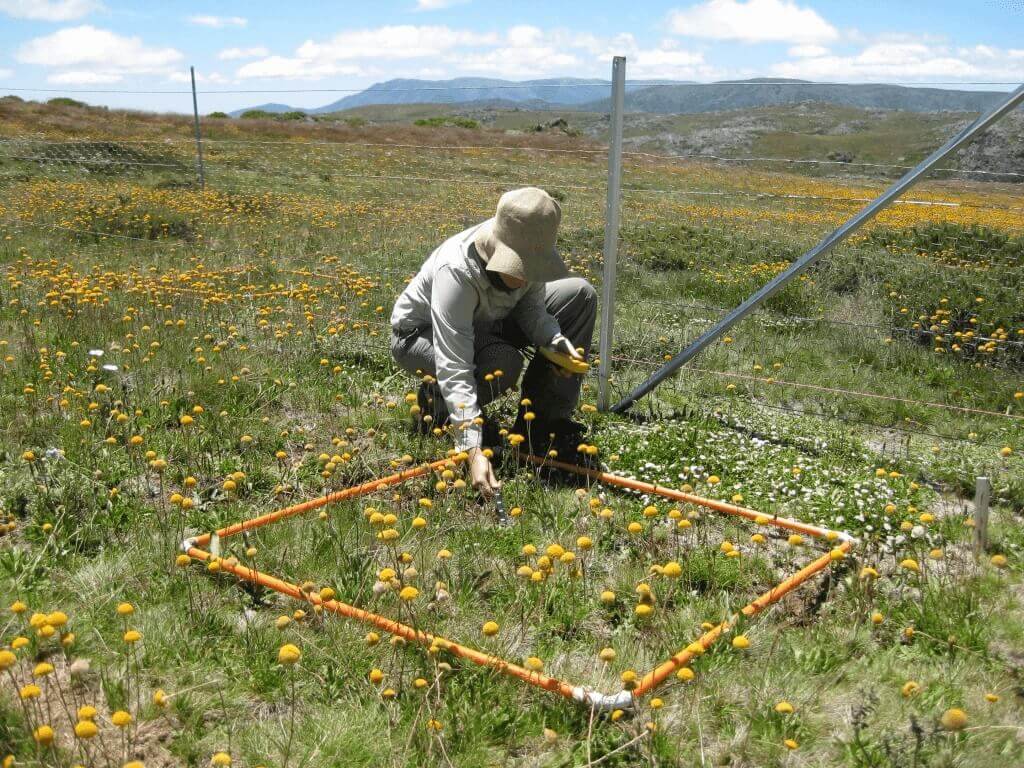Featured Data
Effects of Nutrient Enrichment on Grassland Biomass and Plant Diversity Across the Globe
July 1, 2021
Susanne Grossman-Clarke
Citation
Borer, E.T., W.S. Harpole, P.B. Adler et al. 2020. Data from nutrients cause grassland biomass to outpace herbivory, 2008-2019 ver 1. Environmental Data Initiative. https://doi.org/10.6073/pasta/a318fe0fb11eb43c1a2c8233b2e3494f.
Seabloom, E.W., P.B. Adler, J. Alberti et al. 2020. Effects of chronic nutrient enrichment on plant diversity and ecosystem productivity, 2008-2019 ver 1. Environmental Data Initiative. https://doi.org/10.6073/pasta/d78e6e48df246a03129c85a6c1da00d6.
Description
Global grassland biomass production accounts for about a third of terrestrial productivity (Chapin et al. 2002), thereby serving as a sink of atmospheric CO2 and an energy source for terrestrial food webs. It is also vital for human food production. Grasslands’ productivity and diversity across the globe is affected by fossil fuel combustion and agricultural fertilization that have increased deposition of nitrogen and phosphorus relative to pre-industrial levels. Concurrently, habitat loss and degradation remove grasslands’ consumers from food webs.

The data cited here were the basis for two recent research articles on the effects of alterations in grassland nutrient budgets on biomass (Borer et al. 2021) and plant diversity (Seabloom et al, 2021). The data were collected by participants of the Nutrient Network: A Global Research Cooperative (NutNet), a grassroots research effort that conducts globally coordinated grassland experiments. NutNet addresses research questions related to changes in nutrient availability on grassland productivity and plant diversity under consideration of abundance and identity of consumers, as well as other abiotic (climate, soil conditions) and biotic factors (domestic livestock). The scientists at each site replicate the same experiment and sampling protocol across a wide range of grassland ecosystems around the globe (Fig. 1).
The first study (Borer et al. 2020) investigated the interactions of enhanced nutrients and the presence of vertebrate herbivory on grassland biomass, testing the hypothesis that vertebrate herbivores in grasslands consume the additional primary production due to eutrophication. A factorial combination of large herbivore exclusion via fencing and addition of nutrients was applied to experimental plots at 58 regionally representative sites, spanning six continents.
The study demonstrated that on average, herbivory in grasslands around the world remove a constant proportion of fertilized biomass (resource-controlled biomass). This leads to an increase in grassland biomass with fertilization over time, even with wild herbivores present. Across sites, both, the exclusion of vertebrate herbivores and fertilization increased aboveground biomass by 12% and 58%, respectively, at year 2 . The observed changes in biomass were similar in magnitude in the short- and longer-term (2 vs. 5-7 years).

Environmental conditions, in terms of the abundance of wild herbivores or domestic livestock, amounts of precipitation and soil conditions influence the local response. For low precipitation sites, food-limited herbivores can keep up with additional biomass production and no change in biomass production is detected due to fertilization (consumer-controlled biomass).
The second study (Seabloom et al. 2021) investigated how the effects of increased nutrient supply (e.g., nitrogen, phosphorus, potassium, and micronutrients) on aboveground live biomass and plant diversity change over time. Data from NutNet experimental sites with 5 to 11 years of nutrient addition were analyzed. The sites covered 47 grasslands in 12 countries on six continents.
Nutrient enrichment increased aboveground live biomass and reduced richness and plant diversity at most sites and these effects became stronger over time. Nutrient effects on live biomass were reduced where there was an increase in dead plant biomass.
However, contrary to previous studies that show positive effects of plant diversity on productivity and a loss of ecosystem productivity when diversity declines, there was no evidence that the nutrient-induced losses of diversity lead to a decline of the initial gains in productivity in the long-term. The study concludes that short-term experiments may underestimate the long-term nutrient enrichment effects on global grassland ecosystems.
References
Borer, E.T., Harpole, W.S., Adler, P.B. et al. (2020): Nutrients cause grassland biomass to outpace herbivory. Nature Communications 11, 6036 (2020). https://doi.org/10.1038/s41467-020-19870-y
Seabloom, E. W., Adler, P. B., Alberti, J. et al. (2021): Increasing effects of chronic nutrient enrichment on plant diversity loss and ecosystem productivity over time. Ecology 102( 2):e03218. 10.1002/ecy.3218
Chapin, F. S., H. A. Mooney, and P. A. Matson. 2002. Principles of terrestrial ecosystem ecology. Springer, New York,New York, USA.